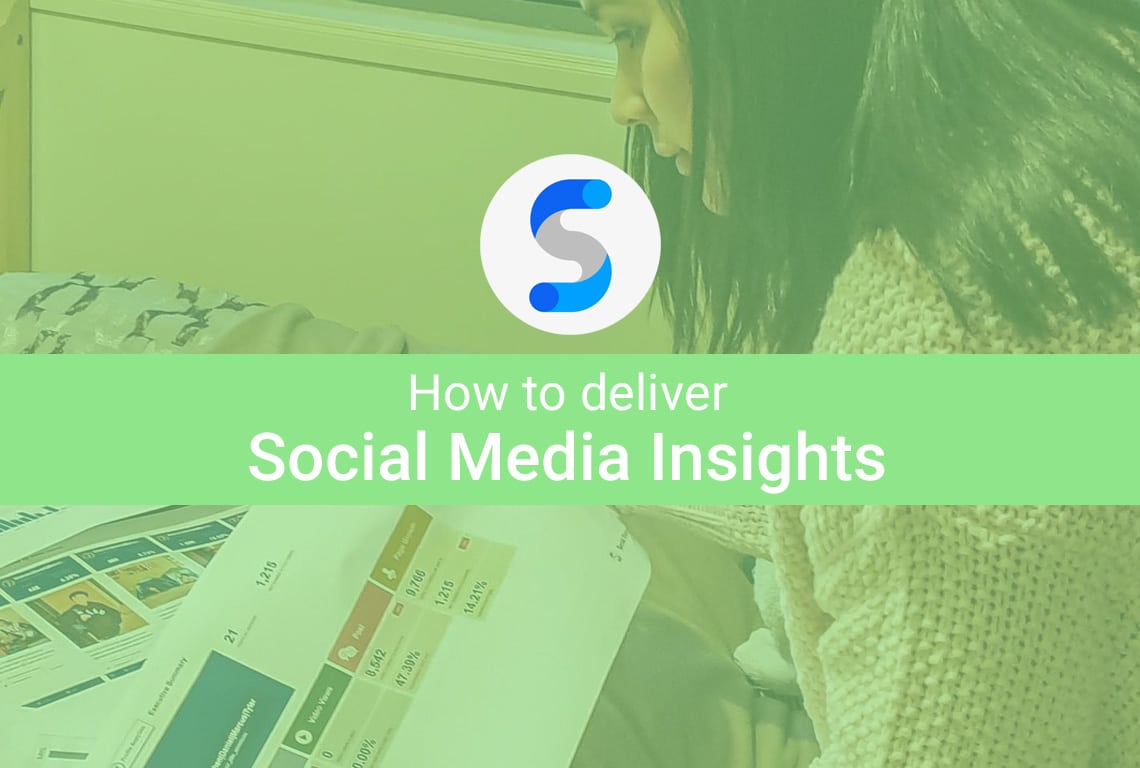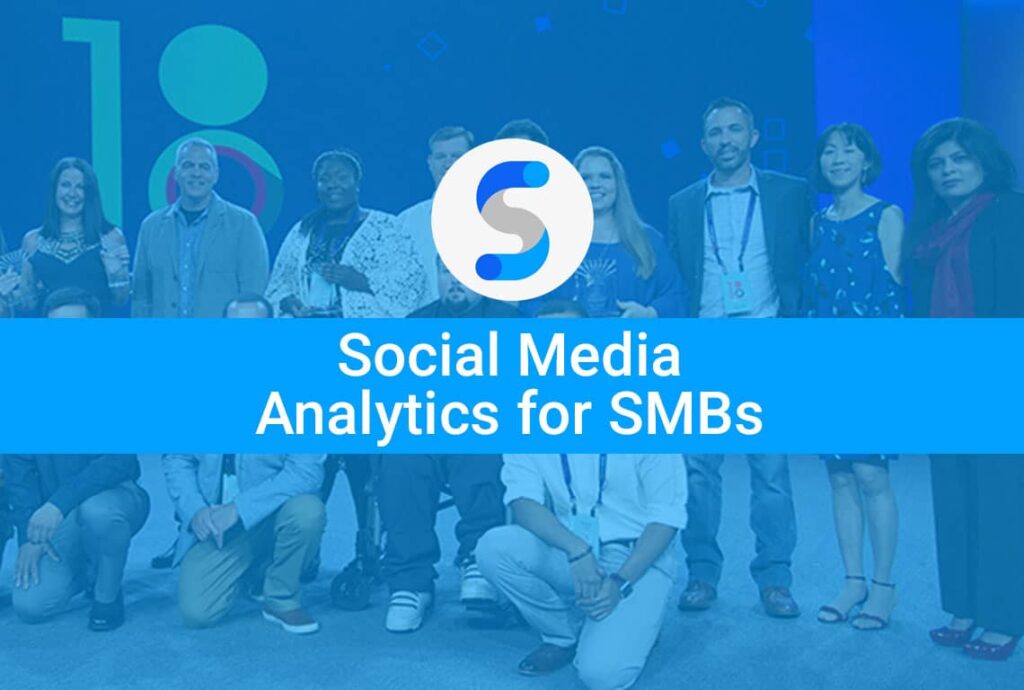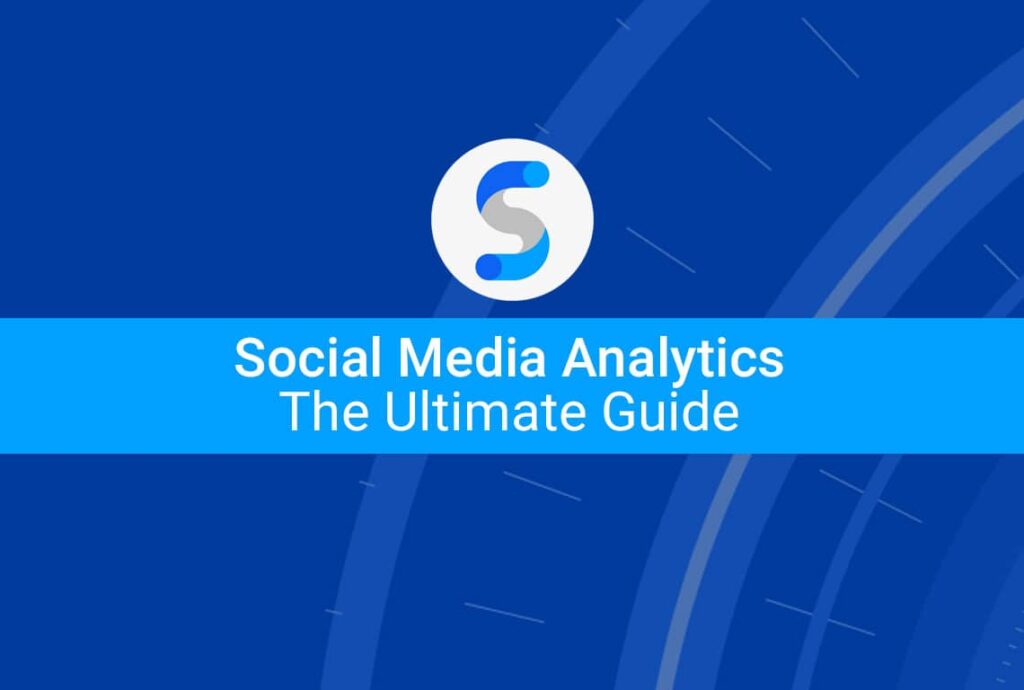There’s a good chance your client or boss won’t have a clue about social media analytics. They may know terms like “tweet” or “hashtag” but start talking about Impressions and Engagement Rate and you’ll get a blank stare. When delivering a report, assume your recipient has little prior social media knowledge.
When you’re faced with this, how do you tell clients or bosses how well you’re doing on social media? After all, social media analytics are just as important as measuring other key performance metrics. Your goal is to make these stats understandable, interesting, and – most of all – demonstrate success.
For agencies, this is all the more important as social media reporting proves the value of your work to clients. Robert Patin, Managing Partner at Patin & Associates works with creative agencies to help grow their businesses and sees social media reporting as a key driver of agency growth.
Agencies looking to grow need to focus on differentiating themselves from their competitors. The way to do so is focusing on providing value and strategy for your clients. With Social Media Analytics you are able to ensure that the budget and resources utilized on social is maximizing ROI for your clients and internal marketing efforts. Without data to guide decisions, you are flying blind.
– Robert Patin
Alongside a range of general advice, this article uses social media analytics best practice concepts to indicate how to communicate with anyone perhaps not as social-savvy as yourself.
Use graphs and visuals
No matter what sector you’re in, nobody wants to read through mountains of text. Unless you’ve got an engaging writing style, you’ll need extra materials to keep people interested. In this instance, the phrase “a picture says a thousand words” could not be truer.
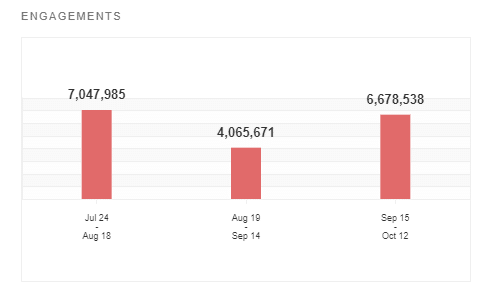
Social Status allows you to choose a custom date range and quickly compare stats historically.
With a graph your client or boss can visually compare current and previous results, even if they’re not up to date with the terminology. If you have a bar graph plotting your engagements each month and the bars are growing in size, they’ll be able to tell if there’s been an improvement. They can share those graphs with other people without technical expertise.
If it helps, try using screenshots from social media. A positive comment from a user about a campaign can solidify its success. Similarly, a screenshot of a successful post can demonstrate why it’s performed well, especially if it’s annotated. If the stats are skewed, screenshot the post that’s caused it and explain the anomaly.
Include a social media analytics glossary
Where necessary, your reports should use plain language. Use common phrases instead of complex terminology and unclear acronyms. This won’t always be possible – in these instances, explain what these terms mean.
Inserting a glossary within your report (or as a supplement) helps cover terms you’ve referenced. If possible, hyperlink the first instance of each term in the report to the relevant part of the glossary. That way, the reader can click and immediately learn what the word or phrase means.
In general, a social media analytics glossary is a great asset to have. It doesn’t need to be anything fancy, but it’ll prove useful time after time.
Mention only the necessary information
You may work with clients or bosses who are not only unfamiliar with social media but may not have the time to discuss it at length. When you’re faced with a challenge like this, it’s important to know what details to present.
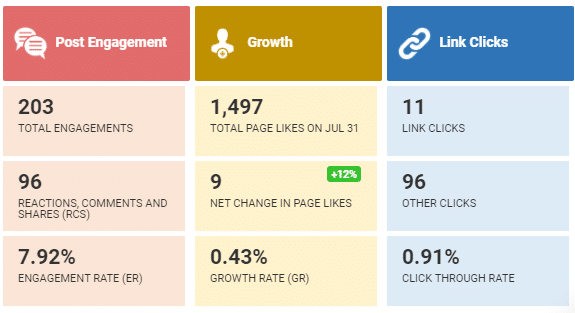
Profile Analytics displays vital insights at a glance, including overall engagement, fan growth, clicks and more.
What will your client or boss understand? What have they focused on recently (such as the success of an event or brand awareness)? What information have you previously sent to them? Sometimes your entire report will be useful, but in some cases, you can remove a few pages and offer a streamlined version.
Social Status allows you to export social media reports automatically in a variety of formats including Acrobat PDF, PowerPoint and Google Slides. Choose which one’s best for you, and then produce a second version with just the key information. A lot of the hard work (including graphs and best posts) has already been done, so focus on picking out what’s important.
Consider occurrences outside of social media
Social media will form part of your wider business and communications plan. Social media will factor into the promotion of events and key dates, sitting alongside other marketing formats. When delivering a report, make sure you consider how these external occurrences may impact your stats.
If a campaign has done well, discuss what you did offline to drive people towards social media. Did you promote your social media accounts with physical materials such as flyers and posters? Did you encourage people to interact on social media, perhaps through hashtag use? Did you collaborate with others to maximise your reach? Reference these when presenting your report, as it’ll show your hard work both online and offline.
You should also consider events that may have negatively impacted your stats. Did something not go to plan? Was it an event or key date which didn’t need an online campaign? Consider these points, as they’ll tell a client or boss their next course of action.
Finally, look at whether the use of a trending topic or relevant hashtag helped your engagement. For instance, if you shared a cat photo on #WorldCatDay and it performed well, this can be referenced in your report.
Highlight your best posts
If you’ve had a good month, you should be proud of yourself. Stats and graphs are great, but you should show exactly what you did to deliver this success.
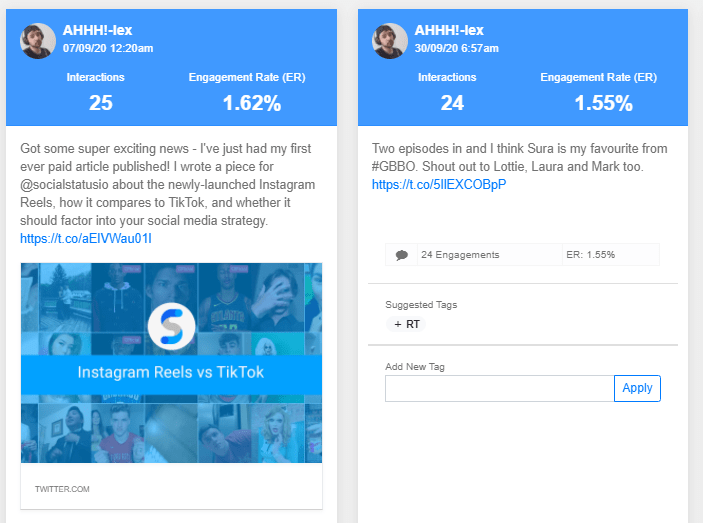
Using the Content Feed in Profile Analytics, you can tag your posts and sort them by varying criteria.
When you show which posts have worked well, you can explain why they’ve worked well. Perhaps the writing style has resonated with people, or maybe the impressive visuals sold the message. By explaining these to your client or boss, they can share in your glee; even if they don’t know the ins and outs of the post, they’ll see what success looks like.
Here’s another benefit of collating your best posts: you can revisit them later to mark your achievements over a longer period of time. Whether it’s for an end of year report, a campaigns report or even for your own pleasure, you can use Social Status to tag and categorise posts. You can also filter and sort by criteria including highest engagement rate and media type, making it easy to find your best posts.
